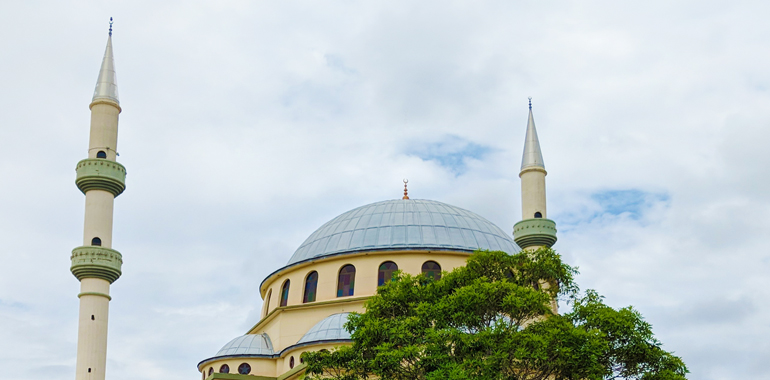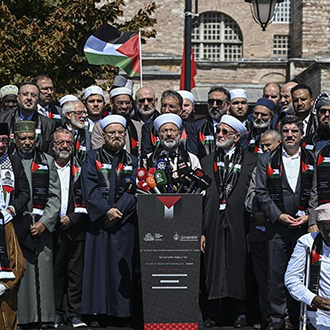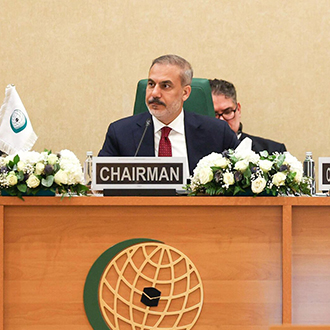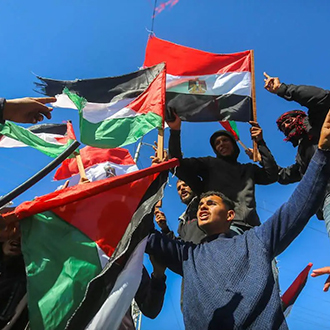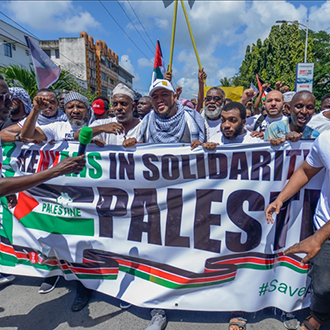However, following the discovery of Australia by European explorers in 1770, the country’s natural and underground resources began to be transported to Europe. To address the challenges of transporting cargo from inland mines to port areas, the idea of using camel caravans was adopted. Camel drivers and camels were brought from Afghanistan in 1860. The first Muslim camel drivers to arrive in the country were Dost Muhammad and his two friends from Kashmir, accompanied by 24 camels. Subsequently, camels and camel drivers were also brought from the Ottoman Empire, India, Egypt, Iran, and Pakistan, and they all became known as Afghans. The common characteristic of this newly recruited population was that they were all Muslims. Muslim laborers working in the transportation of ores from mines and the installation of telegraph lines gradually began to settle in suitable places along the way. In 1861, Muslims built the first mosque in the town of Marree in South Australia, at the crossroads of the mines. In addition to being a place of worship, it was also a meeting and socialization point. Later, small mosques were built in the towns and cities of Broken Hill, Darwin, Brisbane, Perth, Broome, Port Heldand, Farina, Oodradatta, Bridsville, Alice Springs, and Coolgardie.
The commercial relations between Muslims and the local population took on a new shape over time through marriages, and the Muslim population, who had come as temporary workers, began to settle down. In 1888-1889, the children and grandchildren of Afghan laborers built “Australia’s oldest and largest mosque, still in use for worship today” in Adelaide, the capital of the State of South Australia. In 1903, four minarets were added to this mosque. Today, worship is still performed in this mosque.
By the early 1900s, the Muslim population in Australia had reached 6,011. The last quarter of the 19th century witnessed the rapid spread of Islam in Australia, and mosques and masjids emerged throughout the country, ensuring the continued presence of Islam.
Muslims, who first officially settled in Australia as workers in the 1860s, are today making their presence felt in politics, government agencies, municipalities, universities, schools, hospitals, social centers, commerce, construction, agriculture, in short, in all areas of life, as administrators, managers, educators, experts, and employers.
Islamic Organizations in Australia
Before the 1950s, Muslims were mostly active in their own mosques and masjids, but after the 1950s, they began to join forces and establish larger organizations. In 1953, the first Islamic association was established by Muslim Australians of Albanian origin in the town of Mareeba near the city of Cairns. A house was purchased and converted into a masjid, and a mosque was built in the same place in 1960. Again, Muslim Australians of Albanian descent established an Islamic association and a mosque in Shepparton in 1958. This mosque is also known as the first mosque in the state of Victoria.
It is known that there are more than 1000 mosques, masjids, and organizations in Australia. In and around the city of Sydney alone, there are around 300 places operating under the names of mosques, masjids, youth centers, Islamic centers, prayer rooms, and so forth.
In 1964, the Australian Federation of Islamic Societies (AFIS) was established in order to gather the associations and Islamic centers spread across the country under a single roof; in 1976, the name was changed to the Australian Federation of Islamic Councils (AFIC). AFIC, which has long been recognized by the Australian government as the umbrella organization of all Muslims, has played a major role in the organization of Islamic services in the country and has pioneered the opening of private schools that will provide religious education and training over time.
Another umbrella organization that has made a name in the country is the Australian National Imams Council (ANIC). Established in 2006, ANIC has become one of the largest umbrella organizations in the country in recent years, accrediting around 200 mosques and masjids around 250 imams and religious officials, and 16 Islamic schools.
Currently, there are approximately 25 mosques in Australia, primarily located in Sydney and Melbourne, that are inaugurated for worship by the Turkish community. In 2013, under the leadership of the Presidency of Religious Affairs, eight mosques administered by Turkish-Islamic Associations in the states of New South Wales (NSW) and Queensland (QLD) were brought together under the roof of the Diyanet Foundation of Australia. Apart from these, there are three other mosques. The Australian Diyanet Association also provides services in the city of Melbourne. In addition to local support such as scholarships for students, food support, daily meals for the homeless and orphans, and meeting the needs of religious places, both Diyanet organizations have also extended a helping hand to New Zealand and neighboring island countries around Australia and worked in cooperation with the Muslims of the region. The synergy created through community involvement and social aid activities has garnered appreciation from the Muslim and Turkish communities, as well as from all Australians. This positive engagement will continue in the future.



